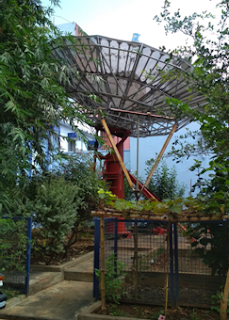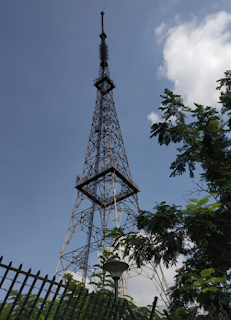The last two decades has seen an increasing development in
the wireless sector where “small cells” are deployed to provide capacity and
coverage, both outdoors and indoors. With this small cell technology, we are
able to achieve increase capacity and high radio densities. The Basic types of
small cells: femtocells, picocells, macrocells and microcells.
Picocells:
The various types of small cells are different in a number
of ways, including how many users they can support and the technology they use.
There are however also numerous similarities. This is the main reason why they
are all grouped together under the label small cells. These low power radio
access nodes can be deployed indoors or outdoors, and use licensed, shared or
unlicensed spectrum. They usually have a range from 10 meters to a few
kilometers. The below Fig1 will give us a clear idea on cell types.
Picocells:
A Picocell Covers the radius of around 200 meters. The
Picocells are usually used at places with high crowd density - like festivals,
stadiums, concerts and other large gatherings. It is very useful in securing
voice and data connectivity in these areas. Picocells are larger than
Femtocells. Picocells are available for most
cellular technologies including GSM, CDMA, UMTS and LTE from various manufacturers.
Femtocells:
Femtocell is a small, low-power cellular base station. The
femtocell concept can be applied to wide variety of technologies. Each type of
femtocell provides different type of services. The main types of femtocells are
shown in Fig2,
Comparatively, femtocells are the most energy efficient base
stations. This makes it widely used in smart home Technologies. Moreover,
femtocells can be used in many IoT applications in order to provide
communication with boost in energy efficiency. Recently, Smart homes use
femtocells with access modes, various bit rates and they introduced sleep mode.
These advancements make it more preferable. Fig3 shows us Femtocell deployment
at homes. Connection between the macrocell and femtocell is established through
the Internet.
Picocells vs Femtocells:
- · Picocells generally have higher PA power, higher processing power and can connect a higher number of simultaneous active users, in addition to faster handover capability. They are typically more expensive than femtocells, but also the better candidate for serving outdoor hotspots.
- · The important benefit of femtocells is the elimination of coverage area problems for indoor scenarios. Some other benefits of femtocells include reduced capital and operational expenditure, reduced bandwidth load and power requirements, increased average revenue per user, and deployment in operator-owned spectrum.
- · Unless the indoor environment is an “open hall” type (i.e. one large open space without obstacles), most in-building environments will have many man-made objects that act as obstacles to radio propagation; therefore one must consider the so-called “shadowing effect”.
A large number of low-power femtocells
provides much better “macroscopic diversity”. In simple words, to eliminate
shadowing elect we can use many number of femtocells around the target. This
might cost more than installation of picocell but the efficiency is highly
improved and shadowing effect is eliminated.
Macrocell and Microcell :
Microcell is usually larger than a
picocell, though the distinction is not always clear. A microcell uses power
control to limit the radius of its coverage area. The output power is higher,
thus there is increase in maximum users.
Macrocell base stations have power outputs of
typically tens of watts. Macrocell performance can be increased by increasing
the efficiency of the transreciever. The antennas for macrocells are mounted on
ground-based masts, rooftops and other existing structures, at a height that
provides a clear view over the surrounding buildings and terrain. From Fig3 we
can get an idea that macrocell has larger cell radius and interconnections can
be made.
Summary:
Summary:
- Small cells are nothing but small base stations which acts like repeaters.
- Femtocells are used in IOT due to energy efficiency.
- Macrocells and Femtocells when connected gives advanced smart home features.
- Wi-Fi is a small cell but does not operate in licensed spectrum.
- Shadowing effects can be eliminated by replacing picocells with numerous low-powered femtocells.








